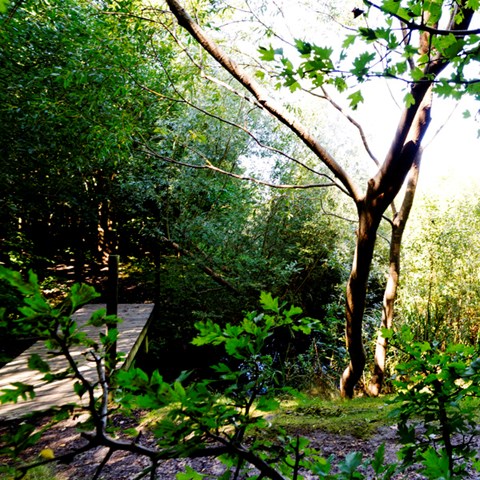The planned innovation project is based on the question of what enables or enhances the quality of learning activities outdoors. During the autumn of 2022, the idea project "Future Learning Environments at SLU Alnarp" was conducted. The focus of the project was on indoor environments, but one of the questions was also about outdoor learning activities and what such an environment needs to contain to maintain a conducive learning environment.
"That project showed that there is a lot that can be done or could be done. But what is good and appropriate when we also consider that the quality should be the same or better than in indoor learning environments? That's what we want to find out with this project. There are few, if any, examples of outdoor environments designed with a focus on higher education learning and pedagogy. "There is much to be inspired by in related areas such as pedagogy for younger children, health, and rehabilitation," says Kajsa Winnes, operational developer at Akademiska Hus and also the project leader for the innovation project.
Workshops to gather various competencies
In a workshop process during autumn 2023, the project will bring together a multidisciplinary group of teachers, students, and property and real estate developers who will collectively explore this area and provide input to design a number of prototypes.
"At present, we are planning for three workshop sessions from September to November. Since many students may have difficulty freeing up time, we are also planning a student workshop in the late afternoon or evening to capture ideas and perspectives from a wide range of students. We also hope to involve students at Alnarp in the design and construction of prototypes and eventually involve researchers and teachers in relevant areas for prototype and project evaluation," Kajsa Winnes explains.
The project will also be followed by one or more reference groups that can act as sounding boards and provide expertise, ideas, and guidance on overarching issues.
Part of the campus development
The project is a collaboration between SLU and Akademiska Hus and is part of the joint effort to develop the campus.
"Developing our outdoor learning environments becomes an important and exciting piece of the extensive work being done to transform the campus into the green meeting place for world-leading education, research, and innovation that we aspire to be," says Sara Kyrö Wissler, coordinator for the campus development work in Alnarp.
Read more about Vision Alnarp
